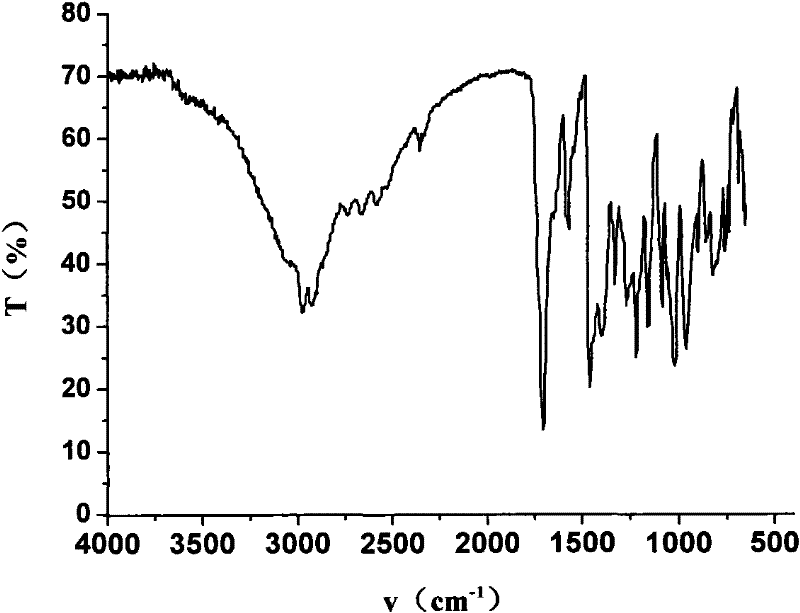Homogeneous chemiluminescence immunoassay method for measuring for organophosphorus pesticide Dursban
A homogeneous chemiluminescence, organophosphorus pesticide technology, applied in the field of pesticide residue analysis and chemiluminescence immunoassay, can solve the problem of less pesticides and veterinary drugs, and achieve the effect of increasing sensitivity
- Summary
- Abstract
- Description
- Claims
- Application Information
AI Technical Summary
Problems solved by technology
Method used
Image
Examples
experiment example 2
[0045] 2. Experimental Example 2 Synthesis of Luminol-Bovine Serum Albumin (Lu-BSA)
[0046] Such as image 3 , Add 50mg of luminol to 5.0mL of 3.0mol / L HCl, stir on a magnetic stirrer at 0-4°C until dissolved. Add 50mg of NaNO to the acidic luminol solution at 0~4℃ 2 solid, and reacted in the dark for 15 minutes. When the reaction was completed, the mixed solution was blue to Congo red test paper, and blue to potassium iodide starch test paper, and then adjusted the mixed solution with 0.50ml / L pH of 8.5 borax buffer to make its pH as Around 8.5. Then add a certain amount of 0.10mol / L PBS buffer solution containing BSA, and react in the dark for 24 hours at 0-4°C. The reaction mixture was dialyzed by static gradient dialysis with borax buffer solution in a dark place, and the molecular weight cut-off of the dialysis membrane was (8000-12000). Take the dialysate every 12 hours, scan through the fluorescence spectrum, and detect the luminol (Lu) content of the dialysate wit...
experiment example 3
[0048] 3. Experimental example 3 Synthesis of chlorpyrifos chemiluminescent marker (Lu-BSA-AR)
[0049] Such as Figure 4, Weigh the activated chlorpyrifos (AR) and dissolve it in N,N-dimethylformamide (DMF), add N-hydroxysuccinimide, stir on a magnetic stirrer for 1h, then add 1-ethyl- (3-Dimethylaminopropyl) carbodiimide hydrochloride, continue to stir and react for 2h. A certain amount of the synthesized Lu-BSA solution was added to the above mixture, and the reaction was carried out under magnetic stirring at room temperature in a dark place for 5 hours. After the reaction finishes, the reaction mixture is dialyzed with phosphate buffered saline, and the dialysate is taken every 12 hours, and the content of activated chlorpyrifos (AR) in the dialysate is detected by ultraviolet spectrophotometry, and no AR can be detected in the dialysate after dialysis. Luminol-BSA-chlorpyrifos complex (Lu-BSA-AR) solutions are available. The chlorpyrifos chemiluminescent marker was pr...
Embodiment 7
[0056] 7. Drawing of luminescence kinetic curve of chlorpyrifos chemiluminescence marker (Lu-BSA-AR) in embodiment 7
[0057] Such as Figure 7 , respectively take a certain amount of Lu, Lu-BSA, Lu-BSA-AR solution, and use pH 9.6 carbonate buffer solution to make up to 10ml, then take 100μL of the solution into the measuring cup, inject 0.2mol / L of H 2 o 2 The solution was detected on a BPCL weak luminescence measuring instrument, the chemiluminescence intensity was recorded, and the luminescence kinetic curves of Lu, Lu-BSA, and Lu-BSA-AR were drawn. The results showed that the luminous intensity of Lu-BSA-AR and Lu-BSA decreased compared with Lu, while the luminous intensity of Lu-BSA-AR and Lu-BSA was similar, although the luminous intensity of Lu-BSA-AR was lower than that of Lu , but Lu-BSA-AR still showed good chemiluminescence kinetics.
[0058] 8. Preparation of Experimental Example 8 Working Curve
[0059] Such as Figure 9 , to fix the amount of chlorpyrifos ...
PUM
 Login to View More
Login to View More Abstract
Description
Claims
Application Information
 Login to View More
Login to View More - R&D
- Intellectual Property
- Life Sciences
- Materials
- Tech Scout
- Unparalleled Data Quality
- Higher Quality Content
- 60% Fewer Hallucinations
Browse by: Latest US Patents, China's latest patents, Technical Efficacy Thesaurus, Application Domain, Technology Topic, Popular Technical Reports.
© 2025 PatSnap. All rights reserved.Legal|Privacy policy|Modern Slavery Act Transparency Statement|Sitemap|About US| Contact US: help@patsnap.com



